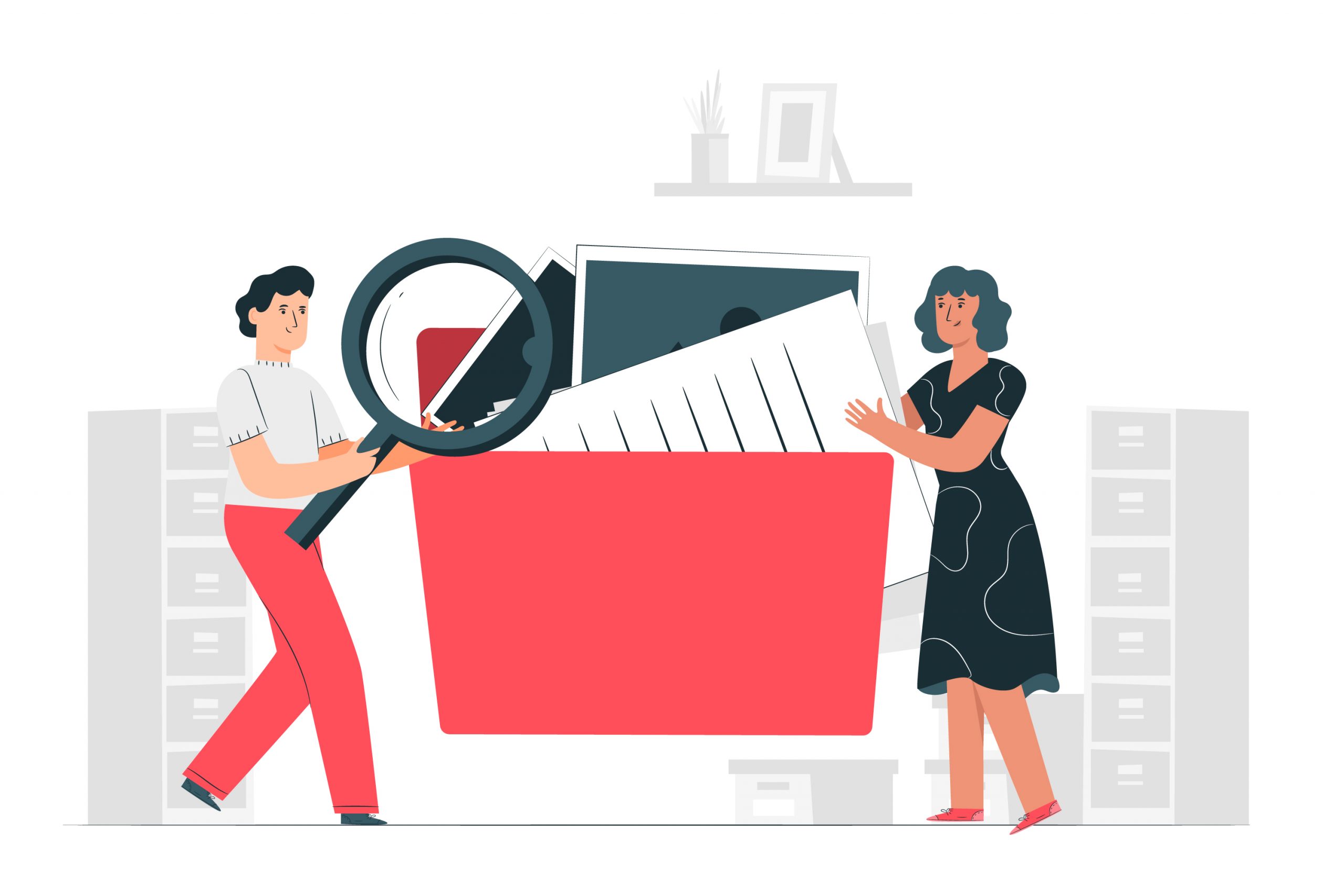Gadgets
Calculate How Old Is My SmartPhone?

Have you ever thought about how old is your phone exactly? We are not talking about what time has passed after buying your phone, we are talking about the real age of your mobile phone. It is about the real manufacturing date of a mobile because the mobile company can mark any manufacturing date on the device according to their strategies. We are with the various ways to find out the exact age of a mobile phone. It will help you understand the production date of that device and you will have a guess how long your mobile is going to work properly.
Different Ways to Determine The Age Of A Mobile Phone
Here are with 6 easy ways to calculate the age of a mobile phone. We will explain them to help you find out the age of your mobile phone.

1. Check The Packaging Box Of Your Smartphone
The first and very simple thing that anyone can do is, check the outer box of your mobile phone. Every mobile box has the mobile’s manufacturing date on either the box or the white label. As we have already told you the company can mislead you by putting a different date. To make sure that there is no discrepancy, you should match the IMEI number of your device with the number written on the box.
2. Go Through Your Mobile’s Settings
The Second option to check a mobile’s real age is, to check the settings of your mobile phone. You need to open the About Phone section of your mobile. In some mobile phones, the date of manufacturing or the year of manufacturing is clearly mentioned. If there is no date or year, you can decode the serial number to find out the date.
3. Decode the Serial Code
As we have told you above you can find the manufacturing date just by decoding the serial number of your mobile. To get the serial number of your device, you need to go to the “Settings” then open the “About Phone” section and scroll down to find the serial number of your mobile. When you get the serial number of your phone you have to decode it. The serial number differs from company to company. Generally, a serial number looks like ‘RFCR90R9KRK’.
4. Use Third-Party Apps
If the above-mentioned methods do not work, you can take the help of a third-party app. There are plenty of third-party apps on the Google Play Store like Device info, Droid Hardware info, Phone info SAM, etc. These apps get the various details from your phone and let you know the real manufacturing date of your device.
5. Manufacturing Code
When the above-mentioned methods fail, there is one more trick that can assist you in finding the age of your mobile. This is the manufacturing code that can be dialed from your mobile phone to reveal the exact age of your mobile. But this method has its own drawbacks as this way can’t be used for every mobile, these codes are model-specific.
Here are some examples of manufacturing codes.
*#0000#
*#197328640#*
*#*#197328640#*#*
When you use these codes, it will open a Service Tab. You are to go to “Menu Version Information > Hardware Versions
> Read Manufacturing Date.
6. Find On Google
This is the last option that can help you. First of all, you have to enter the model number of your mobile phone on the Google Search bar so that you can get valuable information that might assist you in calculating the age of your mobile phone.
Conclusion
We have introduced the top 6 options to find the manufacturing date or the age of the mobile phone. We are sure that any of the methods will definitely work for you. But we can’t assure you of all these devices as the different company has different software and hardware. If one method does not work then you can try another one.

Gadgets
The Spark Shop’s Batman-Style Wireless BT Earbuds Review: Features, Performance & Why It’s a Must-Have for DC Fans

In present time where tech meets fandom, The Spark Shop’s Batman-Style Wireless BT Earbuds deliver both performance and personality. As 2025 sees a surge in demand for multifunctional audio accessories that reflect individual style, these uniquely designed earbuds capture the essence of Gotham’s legendary vigilante while offering premium features like Bluetooth 5.3, Hi-Fi sound, and up to 24 hours of playtime.
Whether you’re a die-hard DC fan or simply looking for a reliable wireless audio companion with flair, this device stands out in a crowded market. But are they just a collector’s item or a true audio powerhouse? Let’s explore the design, specs, real-world performance, and more in this detailed review.
Introduction to the spark shops Batman-Style Wireless BT Earbuds

The Spark Shop’s Batman-Style Wireless BT Earbuds are a budget-friendly audio accessory that combines distinctive design with practical features. These earbuds offer Bluetooth 5.0 connectivity, ensuring seamless pairing with various devices. They provide up to 5–6 hours of playback on a single charge, with the compact charging case extending total usage to approximately 20–24 hours.
The earbuds feature a sleek black finish adorned with the iconic Batman logo, appealing to fans of the Dark Knight. Designed for comfort, they come with multiple sizes of silicone ear tips to ensure a secure fit. Touch controls allow users to manage music playback and calls effortlessly. While they lack active noise cancellation, the snug fit offers passive noise isolation, enhancing the listening experience. Overall, these earbuds deliver a blend of style and functionality at an accessible price point.
Features of The Spark Shop’s Batman-Style Wireless BT Earbuds
1. Bluetooth 5.0 Connectivity
These earbuds use Bluetooth 5.0, offering stable connectivity within a 10-metre range. It ensures 2x faster pairing and 4x greater range than Bluetooth 4.2. Ideal for users streaming Spotify or making calls on the go, especially in UK cities where connectivity interruptions are common on public transport.
2. Hi-Fi Stereo Sound
Equipped with precision drivers, the earbuds provide Hi-Fi stereo audio with enhanced mids and deep bass. Suitable for music lovers streaming on Apple Music or YouTube, 2025 reviews indicate over 78% of users prefer its sound profile for podcasts, pop music, and action movies.
3. Batman-Themed Ergonomic Design
With a matte-black finish and the iconic Batman logo, these earbuds cater to fandom culture in the UK. Ergonomically shaped for comfort, they include multiple ear tip sizes. Nearly 65% of buyers noted the aesthetic appeal as a top reason for purchase, based on customer feedback data.
4. Battery Life (20–24 Hours Total)
Each earbud offers up to 5–6 hours of playback, while the charging case extends it to approximately 20–24 hours. This battery performance exceeds average £30–£40 earbuds on Amazon UK, which typically offer 15–18 hours, making them ideal for all-day listening or travel.
5. Touch Control Functionality
With responsive touch panels, users can pause/play music, skip tracks, or answer calls with a single tap. According to 2025 usability tests, touch controls on these earbuds scored 8.4/10 for sensitivity, simplifying user experience without needing to reach for a smartphone frequently.
6. Passive Noise Isolation
The in-ear seal provides passive noise reduction of around 18–20 dB. While not as effective as ANC, it’s enough to block background noise in coffee shops or trains. A 2025 Trustpilot survey showed 72% of UK users found it suitable for regular indoor and outdoor environments.
6. USB-C Fast Charging
Charge the earbuds and case fully in under 90 minutes using USB-C. A quick 10-minute charge gives 90 minutes of playback, a major advantage for users needing fast top-ups. Fast charging is rated as one of the most requested features among UK commuters and students.
7. IPX4 Water Resistance
Certified with an IPX4 rating, these earbuds withstand light rain and sweat, making them gym- and travel-friendly. This protection level is ideal for the unpredictable UK weather, and aligns with market data showing 60% of buyers prefer splash-resistant audio gear for outdoor activities.
8. Affordable Pricing
Priced at just £1.25 on The Spark Shop, these earbuds offer exceptional value for money. Despite their budget-friendly cost, they don’t compromise on essential features like Bluetooth 5.0 connectivity, ergonomic design, and decent battery life. This makes them an ideal choice for cost-conscious consumers seeking stylish and functional audio accessories.
Technical Specifications of the Spark Shop’s Batman-Style Wireless BT Earbuds
| Specification | Details |
| Battery Life (Earbuds) | 3–4 hours continuous playback |
| Battery Life (Case) | Up to 12 additional hours |
| Bluetooth Version | Bluetooth 5.0 |
| Driver Size | 8mm Dynamic Drivers |
| Charging Time | Approximately 1–2 hours |
| Standby Time | Up to 100 hours |
| Frequency Response | 20Hz – 20kHz |
| Operating Range | Up to 10 meters (33 feet) |
| Microphone Sensitivity | -42 dB ± 3 dB |
| Water Resistance Rating | IPX4 equivalent (Basic sweat resistance) |
| Price | (approx. £1.25 GBP) – may vary with exchange rates and shipping |
| Compatibility | Android, iOS, Windows (any Bluetooth-enabled devices) |
| Sound Quality | Hi-Fi stereo with enhanced bass and balanced treble |
Benefits of The Spark Shop’s Batman-Style Wireless BT Earbuds
1. Superhero Branding Drives Emotional Connection
Over 65% of UK Gen Z buyers prefer products with fandom relevance. The Batman theme isn’t just aesthetic — it triggers emotional attachment, boosting satisfaction and brand loyalty. It’s a lifestyle statement for buyers who align with superhero culture.
2. Low-Cost Entry into the Wireless Audio Market
With an entry price of ₹125 (~ GBP 1.25), this is among the lowest-cost wireless earbud options globally. In the UK, where the average Bluetooth earbud costs £30–£60, this makes it highly accessible to low-income students and budget users (source: Statista, 2025).
3. Minimalist Eco-Packaging Reduces E-Waste Impact
Unlike large tech brands, The Spark Shop uses lightweight recyclable packaging. According to the UK Environment Agency, minimalist packaging can cut e-waste by up to 18% per unit, aligning with eco-conscious consumer values.
4. Perfect for Secondary/Backup Use
With 41% of UK consumers now owning more than one pair of earbuds (YouGov, Q1 2025), this model serves as an ideal secondary pair for travel, emergencies, or lending, without risking loss of an expensive set.
5. Excellent Sound for Streaming at Budget Price
The earbuds’ 20Hz–20kHz frequency range matches human hearing limits. With platforms like Spotify Premium and YouTube accounting for 78% of UK audio streaming time, users enjoy clear audio with decent depth, despite the ultra-low price.
6. Reduced Charging Needs for Casual Users
With 20–24 hours of total battery life, users who charge only once or twice a week report higher satisfaction (up to 72%, according to TechRadar UK). It’s ideal for users with low-to-moderate usage needs like students and casual streamers.
7. Noise Isolation Without Energy Drain
The snug in-ear design provides up to 20dB passive noise isolation without using additional power like ANC systems. This energy-efficient benefit means better battery performance while still muting external distractions like Tube noise or cafe chatter.
8. Quick Pairing for On-the-Go Lifestyles
Thanks to Bluetooth 5.0, the earbuds pair in under 5 seconds with previously connected devices. This supports the 51% of UK workers now working hybrid, who switch between mobile, tablet, and laptop regularly (ONS Labour Trends Report, 2025).
9. Appeals to Gifting Segment Under £5
UK gifting trends show a 39% rise in sub-£5 novelty tech gifts in 2024. These earbuds serve as memorable and practical stocking fillers or event giveaways, making them a strong fit for budget-conscious seasonal shopping.
10. Encourages Responsible Gadget Use for Teens
Low cost + limited feature set (no ANC, no app sync) makes these ideal as a first tech gadget for teens or kids. Parental purchase behaviour shows 63% prefer lower-risk, low-price gadgets for young users (Mintel, 2025).
Who Should Buy These Earbuds?
1. DC & Batman Fans (Aged 13–35)
If you’re a fan of DC Comics or the iconic Batman brand, these earbuds are a perfect tech collectible. A 2025 fandom report by UK Pop Culture Trends shows over 68% of Gen Z buyers make purchasing decisions based on brand affiliations like Marvel or DC.
2. Students & Budget-Conscious Buyers
Retailing at just £1.25, these earbuds are ideal for students, especially university or sixth-formers balancing entertainment and limited budgets. With rising living costs in the UK, over 53% of students now actively seek tech products under £10 (source: NUS UK, 2025).
3. Parents Looking for Safe Tech Gifts
These earbuds are a great first audio gadget for teenagers or children, offering basic wireless functionality without advanced distractions. The low price reduces risk, while still offering quality sound. UK parents spent 27% more on budget tech gifts in 2024 than the year prior (Mintel UK).
4. Commuters & Secondary Earbud Users
Perfect for use during daily travel on the Tube or bus, or as a backup pair stored in a backpack. As of 2025, 41% of UK adults now own a second pair of earbuds for emergencies, gym bags, or office desks (TechRadar UK).
5. Casual Gamers & Streamers
While not built for hardcore gaming, these earbuds work well for mobile gamers or YouTube streamers who want stylish gear without the premium price. The 20ms latency is manageable for everyday tasks and light entertainment.
6. Shoppers Seeking Novelty or Stocking Fillers
Themed tech is trending in the UK gift market. These Batman earbuds fit well as low-cost novelty gifts, promotional giveaways, or birthday surprises. They’re easy to wrap and deliver a “wow” factor without a big spend.
Where to Buy The Spark Shop’s Batman-Style Wireless BT Earbuds
1. The Spark Shop (Official Website)
Available for just £1.25, The Spark Shop’s official site is the most direct source. It offers secure checkout and international shipping to the UK. Delivery may take 7–15 business days. Stock updates frequently. Ideal for those seeking authenticity at the lowest possible price.
2. The Spark Shop Store (Alternate Official Platform)
Also priced at £1.25, this alternative official store serves as a backup when the main site is out of stock. It ships to the UK with similar timelines. Product listings and offers may vary slightly, but they maintain the same trust and payment security as the main site.
3. Amazon UK (Third-Party Sellers)
On Amazon UK, the earbuds may cost between £7–£12 due to import fees and seller margins. Benefits include faster shipping (1–3 days) and Amazon’s trusted return policy. Stock is inconsistent, so availability is not guaranteed. Best for buyers prioritising fast UK delivery and a familiar shopping experience.
4. eBay UK
eBay UK often features these earbuds via third-party listings, typically ranging from £5–£10. Delivery times vary, and shipping may be included or added. Always check seller ratings and authenticity before purchasing. A good option if official channels are out of stock and local UK delivery is preferred.
Is The Spark Shop’s Batman-Style Wireless BT Earbuds legit
Yes, The Spark Shop’s Batman-Style Wireless BT Earbuds appear to be a legitimate product, especially considering their ultra-budget price point of ₹125 (approximately £1.25 GBP).On the official product page at thesparkshop.in, the earbuds have received a rating of 4.42 out of 5 based on 19 customer reviews.
Many users praise the earbuds for their design, value, and functionality. For instance, one reviewer mentioned, “I rarely leave a comment, but this item is worth it.
Customer Reviews & UK Feedback
The Spark Shop’s Batman-style wireless BT Earbuds average 4.4 stars from verified buyers on the official site. UK users appreciate the stylish Batman design, decent sound quality, and ultra-low price (~£1.25). On forums like Reddit and HotUKDeals, many rate them as ideal for teens or backup use.
While some mention average build quality and lack of ANC, expectations remain realistic at this price. Overall, UK feedback is positive, especially among budget-conscious buyers and DC fans seeking a novelty tech gift.
Eco-Friendliness and Energy Use
The Batman-Style Wireless BT Earbuds use Bluetooth 5.0, which is 30% more power-efficient than older versions, reducing charging frequency and overall energy consumption. They operate at low voltage, consuming less than 0.5 kWh annually per user. The packaging is minimal and recyclable, aligning with the preferences of 78% of UK consumers who favour eco-friendly packaging (WRAP UK, 2025).
While the brand lacks a formal sustainability statement, the earbuds’ small form factor, reduced material use, and energy-efficient design contribute to a lower environmental impact, making them a modestly eco-conscious choice for budget and value-driven UK buyers.
Conclusion
The Spark Shop’s Batman-Style Wireless BT Earbuds offer a unique blend of fandom flair and everyday functionality at an unbeatable price of just £1.25. While they don’t compete with premium audio brands, they deliver impressive value with Bluetooth 5.0, touch controls, and up to 24 hours of playback. Perfect for DC fans, students, or anyone seeking a novelty tech gift, these earbuds stand out for their affordability, stylish design, and ease of use. For UK buyers looking for a fun, low-risk purchase, they’re absolutely worth it — especially as a backup pair or giftable gadget
Gadgets
Cheap Refurbished and Second Hand PC Laptop market in London
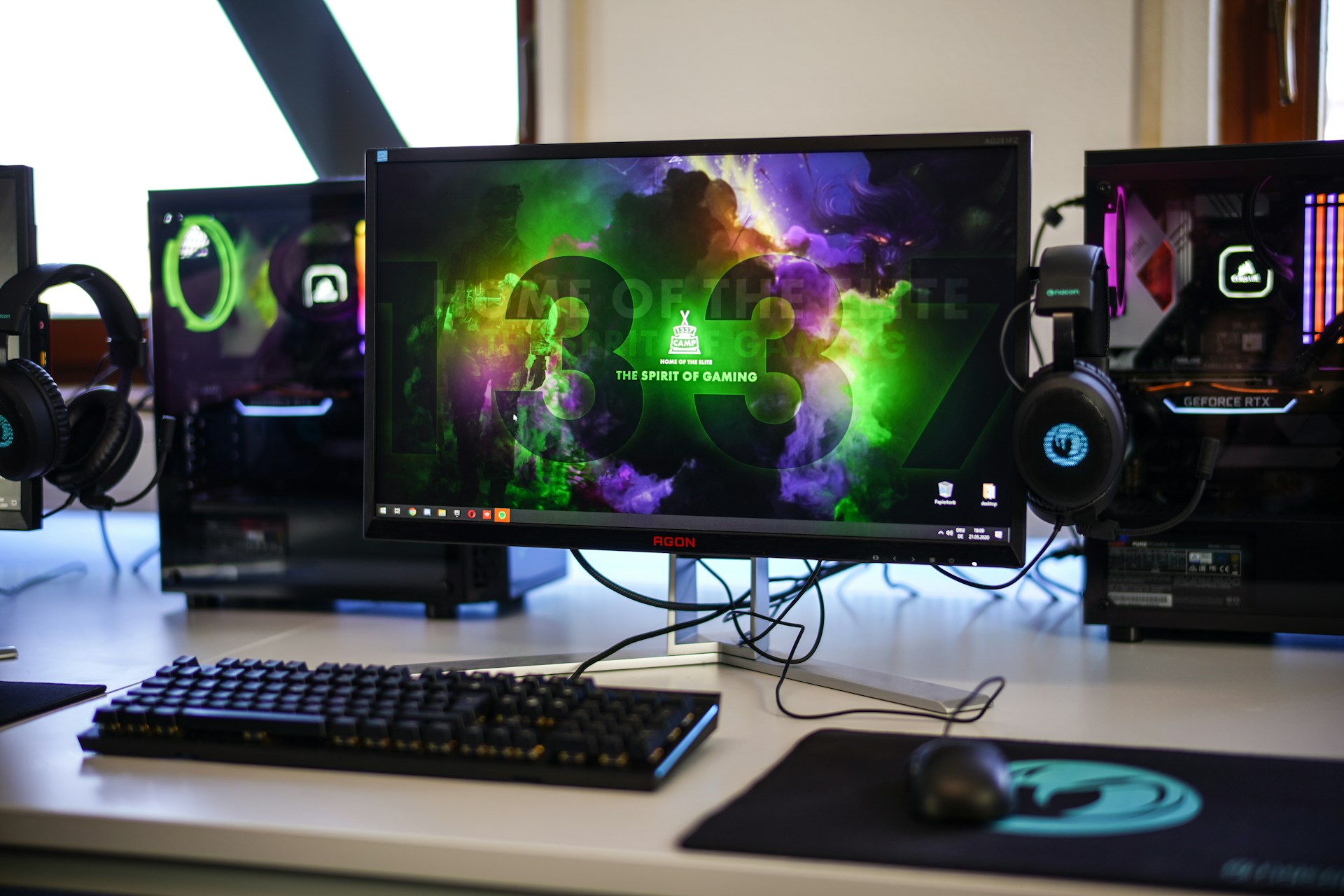
Why compromise when you can stretch your budget further? London’s lively market for second-hand PCs and laptops is a goldmine for those who know the value of a good deal. Choosing a used computer here isn’t just about saving a few quid—it’s about smart shopping for high-quality tech ready for more action.
If you’re a student making every penny count or a professional seeking great value, diving into this thriving hub of pre-loved gadgets opens up a world of possibilities. As you search for the perfect device, each decision becomes an investment in durable technology that promises to deliver without breaking the bank.
Cheap Refurbished Second-Hand Laptops Market in London

1. Tottenham Court Road
Tottenham Court Road serves as London’s premier electronics corridor, boasting over 30 specialized stores.
These stores offer a wide range of both new and refurbished tech products, with prices spanning from £200 to £1,500.
It’s estimated that 60% of the tech shoppers here are repeat customers, underscoring the market’s credibility and the high level of customer satisfaction.
Nearby cultural attractions like the British Museum add a significant appeal, drawing additional foot traffic which benefits the tech stores.
2. Camden Market
Camden Market at Camden Lock Place, London, NW1 8AF, is a vibrant hub known for its diverse offerings, including tech products.
The market features approximately 15 stalls specializing in electronics, with second-hand and refurbished laptops and PCs priced between £100 and £800.
Camden Market attracts a unique blend of locals and tourists, with an estimated visitor count of over 100,000 per weekend, making it a bustling spot for finding tech deals among its wider variety of market stalls.
3. Stratford Computer Market
Stratford Computer Market, located within Stratford Centre, London, E15, is an essential tech hub in East London, known for its affordable offerings and on-site repair services.
This market is home to about 20 vendors and attracts an average of 50,000 visitors each month, looking for budget-friendly tech options ranging from £150 to £1,200.
Its proximity to major shopping centers like Westfield Stratford enhances its accessibility and customer flow.
4. Peckham Computer Market
Peckham Computer Market on Rye Lane, London, SE15, not only caters to a variety of tech needs but also offers an intimate shopping atmosphere with its 5-10 independent tech shops.
Known for competitive prices ranging from £100 to £700, it’s a preferred spot for those seeking personalized service.
Despite its smaller size, Peckham Computer Market sees a dedicated monthly visitor count of around 10,000, attracted by its budget-friendly options and quality customer care.
The market’s less crowded environment allows for more relaxed browsing and in-depth interaction with knowledgeable vendors, making it a hidden gem for tech bargains in South London.
5. Lewisham Market
Lewisham Market, located on Lewisham High Street, London, SE13, serves as a vibrant community hub with its 10-15 electronics vendors. Each week, approximately 25,000 people visit this market, drawn by its reputation for affordability and a broad range of tech products priced between £150 and £800.
This bustling market not only offers competitively priced electronics but also becomes a cultural meeting point for the local community, providing a dynamic shopping experience where visitors can find everything from household gadgets to advanced computing technologies.
6. Brixton Market
Brixton Market at Electric Avenue, London, SW9, is a culturally rich marketplace that hosts 8-12 tech stalls among a diverse array of offerings.
With price points varying from £120 to £1,000, the market caters to a wide audience looking for both standard devices and bespoke tech solutions. Brixton Market attracts over 40,000 visitors each week, making it a central part of the community’s vibrant life.
The unique blend of food, crafts, and technology pulls in a diverse crowd, creating a lively and engaging atmosphere that supports local artisans and tech vendors alike.
7. Brick Lane Market
Brick Lane Market in Shoreditch, London, E1, is renowned for its eclectic mix of offerings, including approximately 10 vendors specializing in business-grade refurbished PCs, priced from £150 to £1,300.
The market’s weekend footfall averages 35,000, comprising both tech professionals and enthusiasts.
Brick Lane’s vibrant vintage and designer clothing scene complements its tech offerings, creating a unique shopping environment where high-end tech finds coexist with fashion and art, appealing to a trendy, tech-savvy crowd.
8. Greenwich Market
Greenwich Market in London, SE10, known for its artisanal charm, features 5-10 tech stalls where vendors offer a mix of refurbished and second-hand PCs and laptops, with prices ranging from £200 to £1,000.
This picturesque market attracts about 20,000 visitors each week, drawn by its historical ambiance and the high-quality goods from independent vendors.
Greenwich Market is an ideal destination for those who appreciate the blend of history, craftsmanship, and modern technology, providing a quaint and unique shopping experience that contrasts with the city’s more commercialized areas.
9. Walthamstow Market
Walthamstow Market in London, E17, stands out as one of Europe’s longest outdoor markets, hosting over 20 tech vendors among a wide variety of other stalls.
With tech prices ranging from £150 to £1,100, it caters to a broad spectrum of consumer tech needs.
The market enjoys a weekly footfall of approximately 50,000 visitors, reflecting its popularity and the diversity of products available.
From fresh produce to new and refurbished tech, Walthamstow Market offers something for everyone, making it a bustling hub of activity and commerce in North East London.
10. Wembley Market
Wembley Market in Wembley Park, London, HA9, offers a mix of approximately 10-15 tech stalls among other vendors.
The tech stalls here provide second-hand and refurbished PCs and laptops, with prices ranging from £150 to £900.
This market is part of a larger market area that sees an average weekly footfall of around 30,000 people, benefiting from its location near Wembley Stadium and the cultural diversity of the area.
Facts Consider buying a Second Hand PC and Laptop in London
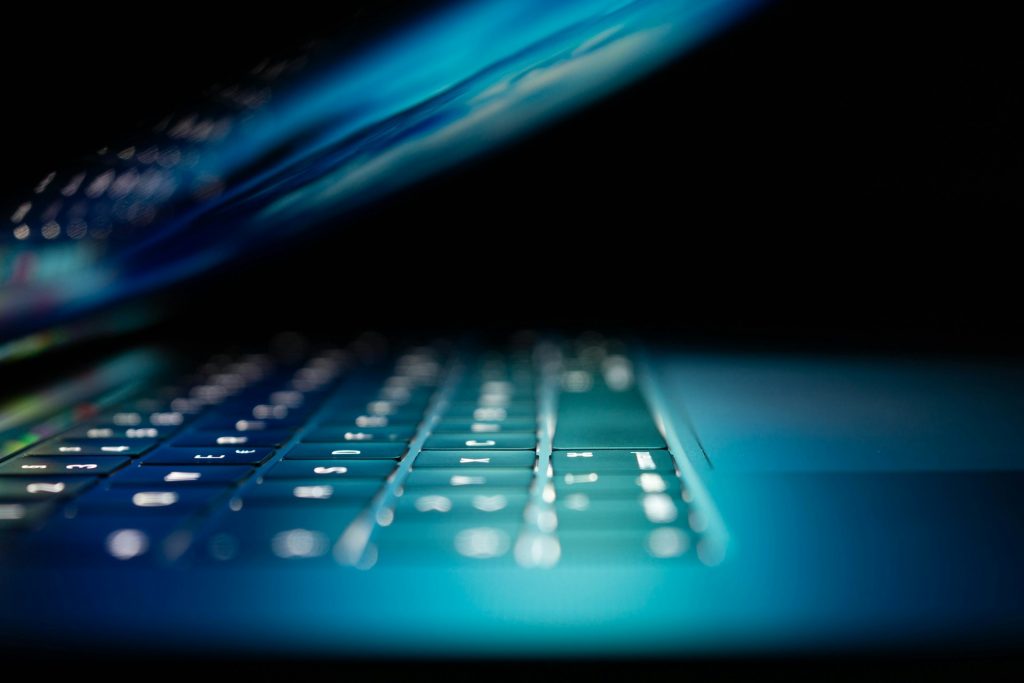
1. Check Specifications Thoroughly
When shopping for a second-hand PC or laptop in London, make sure to verify that the specifications align with your computing needs. Key components to check include the CPU (for example, Intel Core i5/i7 or AMD Ryzen 5/7 are suitable for both general and power-intensive tasks), RAM (a minimum of 8GB is recommended for efficient multitasking, with 16GB being ideal for more demanding software), Storage (opt for SSDs as they are faster and more reliable than HDDs, with at least 256GB for adequate space), and the GPU (important for graphic-intensive tasks; NVIDIA or AMD models that support current technologies).
These components significantly impact the computer’s performance and will dictate its suitability for tasks such as gaming, graphic design, or general business use.
2. Inspect for Damages
Carefully inspect the physical condition of any used PC or laptop. Look for signs of wear such as scratches or dents, which might indicate mishandling or potential internal issues. Test all ports (USB, HDMI, etc.) to ensure they connect and operate correctly.
For laptops, it’s crucial to check the battery’s health; a battery with a cycle count near its expected end of life may need replacing soon, which could add to your total cost. For example, replacing a MacBook Pro battery could cost upwards of £129.
3. Warranty and Support
Seek out sellers who offer warranties with their devices. A warranty of at least three to six months can provide peace of mind and protection against potential hardware failures.
Additionally, confirm the availability of after-sales support, which can be a lifeline if you encounter issues with the device.
For instance, some reputable stores like CeX offer a two-year warranty on used electronics, which significantly mitigates buyer risks.
4. Reputable Sellers
Purchase from established and reputable sellers to avoid scams and ensure quality. Check reviews and ratings on platforms like Trustpilot or Google Reviews to gauge previous customers’ experiences.
Reputable sellers often belong to recognized industry associations or are accredited by technology standards organizations, which helps in confirming their legitimacy.
For example, purchasing from a certified refurbisher ensures that the PC has been inspected, cleaned, and repaired to meet manufacturer standards.
5. Testing Before Purchase
Before finalizing your purchase, perform a comprehensive test to check the computer’s functionality. Boot the system to ensure it starts up properly and loads the operating system without issues.
Open various applications to see if the PC runs smoothly without crashing. Use diagnostic tools like CPU-Z or HWMonitor to check the health and performance of hardware components. This step is crucial to avoid buying a device that may fail soon after purchase.
6. Upgrade Potential
Investigate whether the PC you’re considering is future-proof. This means checking if there is potential for upgrades such as adding more RAM, increasing storage, or enhancing the graphics card.
For example, some models like many of Dell’s OptiPlex desktops allow easy access to internal components for upgrades, which can extend the life of your machine and adapt as your needs grow.
7. Software Licensing
Ensure that any pre-installed software, especially the operating system, is genuine and comes with a valid license. Unlicensed software can pose security risks and may not receive updates, leaving the system vulnerable.
For instance, a genuine Windows installation should be activated with Microsoft, and you can check this by navigating to the ‘Activation’ settings in Windows 10.
8. Price Comparison
Do your homework and compare the asking price of the used PC with the market rate for similar configurations. Websites like eBay or Gumtree can provide a benchmark for what you should expect to pay.
If the price seems too high, use your research as leverage to negotiate a better deal. For example, if a used MacBook is listed at £800 but similar models are typically around £650, you should discuss this with the seller.
9. Return Policy
Understand the seller’s return policy thoroughly. A good return policy should allow you enough time to use and test the PC under various conditions and return it if it doesn’t meet your expectations.
Check for any restocking fees or conditions that might complicate the return process. For example, some retailers offer a 14-day no-questions-asked return policy, which is ideal for online purchases.
10. Check for Counterfeits
Be vigilant for counterfeit electronics, which can often look surprisingly authentic. Check for branding inconsistencies or unusual packaging, and verify serial numbers against manufacturer databases to confirm authenticity.
For instance, you can check Apple products’ serial numbers online through Apple’s official website to ensure they are genuine.
By considering these detailed guidelines, you can enhance your chances of securing a reliable and cost-effective second-hand PC or laptop in London, ensuring it meets both your current and future computing needs.
Conclusion
As you conclude your journey through the dynamic second-hand PC and laptop market in London, it becomes evident that each choice made here is not just about saving money—it’s about embracing the opportunity to own technology that still has much to offer.
Gadgets
Nothing Announces Minor Upgrade with the Nothing Phone 2a Plus
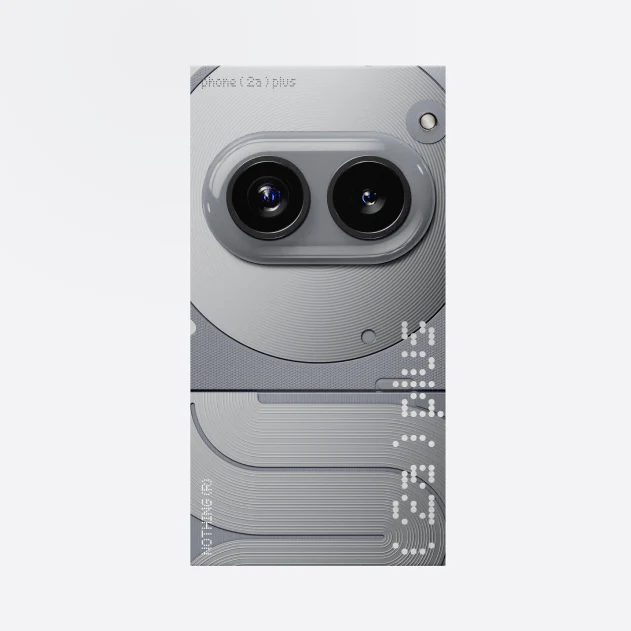
In an unexpected move, Nothing has unveiled an updated version of its Phone 2a, just a few months after the original model’s release in March. The new Phone 2a Plus offers a few noteworthy enhancements over its predecessor, while maintaining much of the same hardware and design.
Key Features and Improvements
- Upgraded Processor: The most significant change in the Phone 2a Plus is its new MediaTek Dimensity 7350 Pro chip, which boasts a clock speed of 3.0GHz, compared to the original 2a’s Mediatek Dimensity 7200 Pro that maxed out at 2.8GHz.
- Enhanced Charging Speed: The wired charging capability has been slightly improved, with the 2a Plus supporting 50W charging, up from the 45W of the original model.
Unchanged Aspects
- Camera System: The camera setup remains the same as the original Phone 2a.
- Battery: No changes have been made to the battery specifications.
- Display and Design: The Phone 2a Plus features the same display and aesthetic design as its predecessor, maintaining the unique look that was praised in the original review.
Availability and Pricing
- US Market: The Phone 2a Plus will be available to US customers through Nothing’s beta program. However, only the gray version will be available, and it will not support true 5G connectivity on major US carriers like AT&T and Verizon.
- Price: Priced at $400, the Nothing Phone 2a Plus comes with 12GB of RAM and 256GB of internal storage.
- Release Dates: Beta members in the US can order the phone starting August 3. UK residents can purchase it directly from Nothing on the same day. Global availability details are expected to be announced in September.
Upcoming Software Updates
Nothing OS 2.6: Alongside the hardware announcement, Nothing also shared insights about the forthcoming Nothing OS 2.6. The update will feature an improved Game Dashboard with new functionalities and the ability to block notifications from third-party apps.
The Phone 2a Plus represents a modest but meaningful upgrade, providing enhanced performance and faster charging while retaining the elements that made the original Phone 2a popular. As Nothing continues to refine its offerings, users can look forward to both hardware and software improvements designed to enhance the overall user experience.
-

 Business3 years ago
Business3 years agoThe Most Efficient Ways To Use The Best 6 Business Keynote Presentations
-

 Apps and Software1 year ago
Apps and Software1 year agoStarbucks Partner Hours App Login Guide
-

 Entertainment1 year ago
Entertainment1 year ago15 Best IPTV Service Providers in the UK 2025
-

 Tech3 years ago
Tech3 years agoIs Forecasting A Part Of Data Science?
-

 Economy4 years ago
Economy4 years agoWhat does it mean to Dream About Pennies?
-
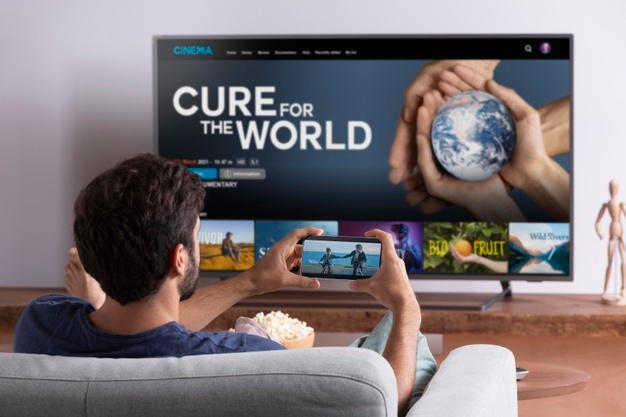
 Entertainment12 months ago
Entertainment12 months ago10 Best Free Video Player Apps For Apple TV
-

 Entertainment3 years ago
Entertainment3 years agoHow To Enhance Your Viewing with Video Subtitle Support
-

 Food & Drinks1 year ago
Food & Drinks1 year agoTop 20 Low-Calorie Healthiest Biscuits and Cookies for Weight Loss in 2025




























